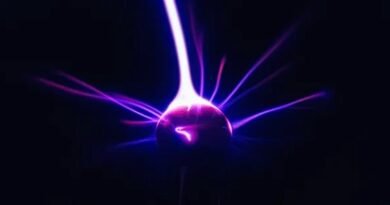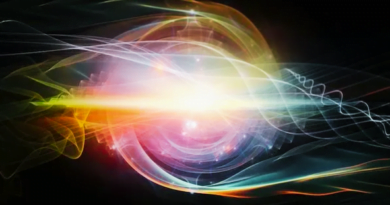Quantum Vortices in Superconductor Experience ‘Sudden Death’ Baffling Researchers

A puzzling phenomenon grips the scientific community as quantum vortices in superconductors experience a mysterious ‘sudden death,’ leaving researchers scratching their heads.
In a groundbreaking discovery, scientists are grappling with the sudden disappearance of quantum fluctuations within an ultra-thin 2D superconductor, specifically in a minute layer of tungsten ditelluride. This intriguing revelation challenges established theories, demanding a fresh perspective to unravel this mysterious occurrence. Decoding the reasons behind this phenomenon holds the promise of unlocking new insights into superconductors—materials that empower electricity to flow without resistance, representing a game-changer in efficient energy transmission, a sought-after goal in modern physics.
The observed quantum phase transition near the superconductor’s critical point stands in defiance of traditional theoretical explanations. This anomaly hints at the exciting prospect of a revolutionary theory emerging once this enigma is comprehensively decoded. Phase transitions, orchestrating atomic rearrangements in materials, manifest on both macroscopic and quantum scales, prompting electrons to form Cooper pairs and flow seamlessly as a superfluid without encountering resistance.
Traditionally confined to temperatures nearing absolute zero, superconductor transitions have long been a subject of fascination, especially the pursuit of achieving superconductivity at higher, more practical temperatures. However, this journey has been marked by challenges, including experimental results that prove difficult to reproduce and allegations of data falsification.
Delving deeper into the emergence of superconductivity, researchers meticulously pared down a tungsten ditelluride crystal to a single-atom layer, subjecting it to supercooling at a mere 50 milliKelvins. Astonishingly, applying a minuscule gate voltage triggered a transformative effect, turning the material into a superconductor.
In the realm of 2D superconductors, quantum vortices—tiny magnetic whirlpools—dictate phase transitions. Contrary to previous assumptions, this study unearthed unexpected behavior; these vortices persisted at higher temperatures and more robust magnetic fields, extending into the material’s insulating phase.
Upon cooling the material to near absolute zero, an intriguing phenomenon unfolded: the abrupt disappearance of quantum whirlpools below the critical electron density. This unexplained event challenges current understanding, hinting at the existence of a novel quantum critical point. Researchers acknowledge the imperative need for a groundbreaking theory to comprehensively articulate and experimentally validate this discovery, marking a pivotal stride in unraveling the perplexing behavior of superconducting materials. Stay tuned for updates on this captivating exploration into the mysteries of quantum phenomena!








